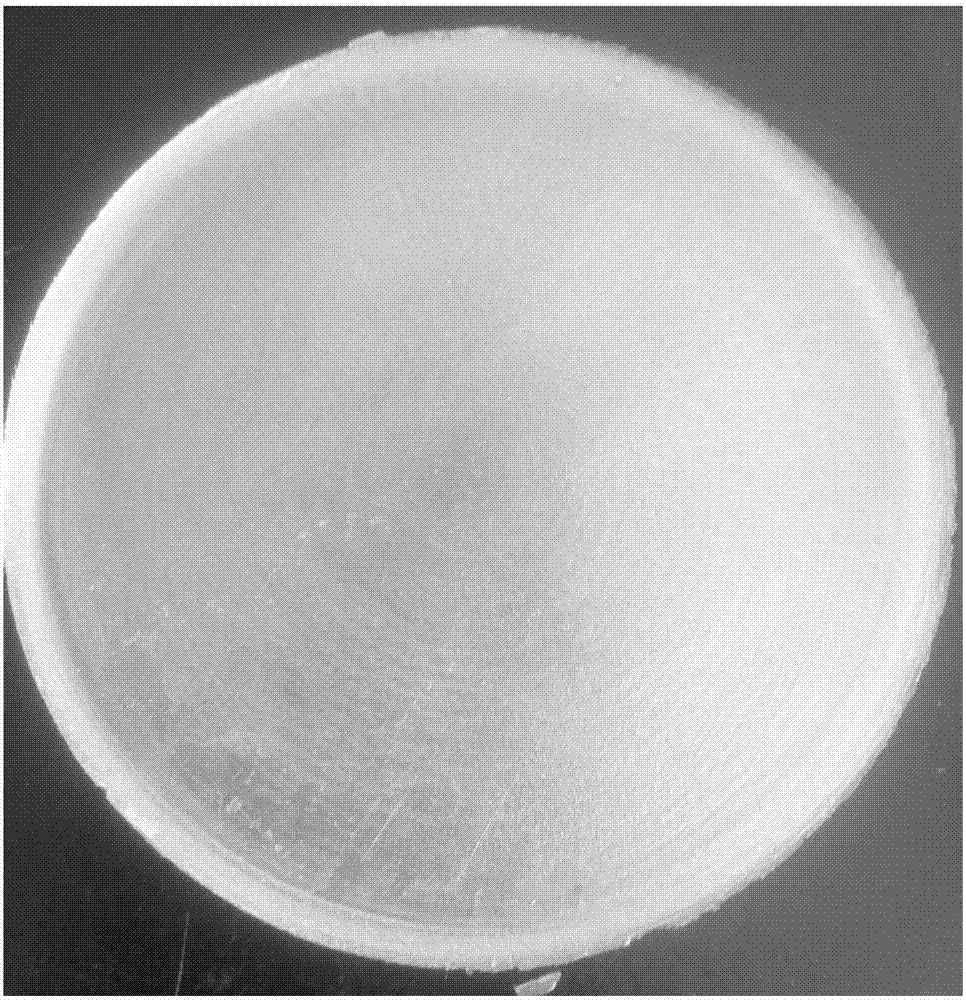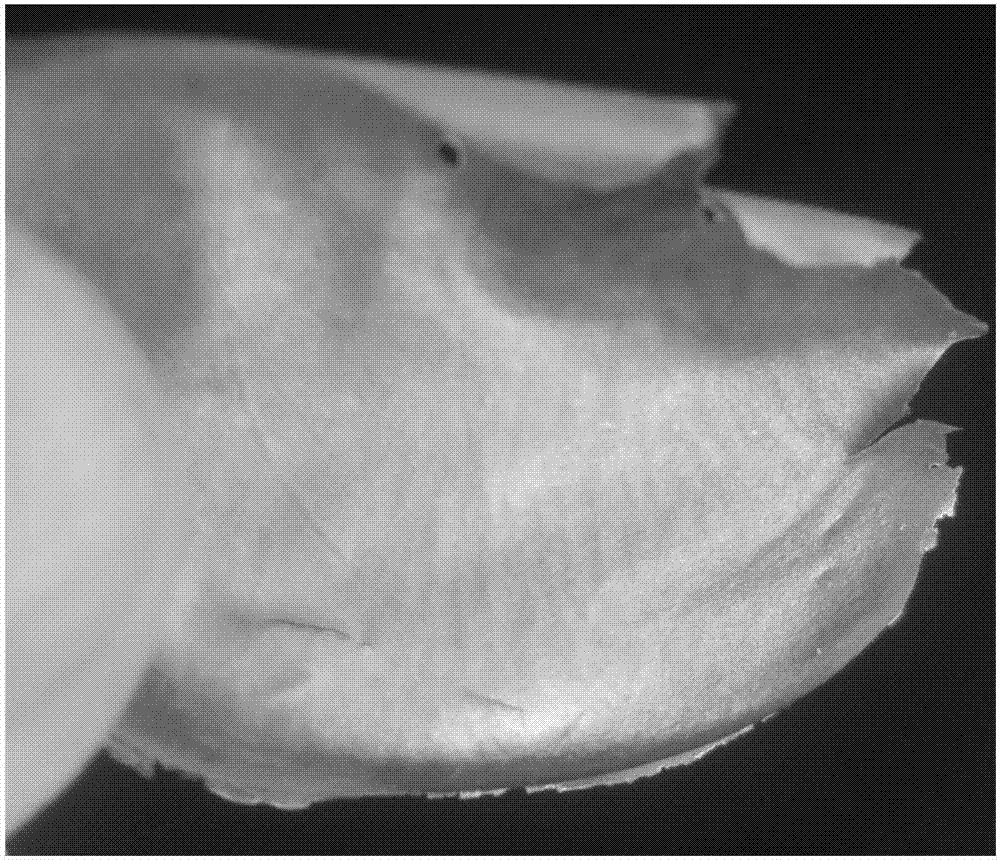Preparation method of optical-response imprint recognition membrane
A photoresponse and imprinting technology, applied in the direction of color/spectral characteristic measurement, etc., can solve problems such as changes in optical responsiveness, and achieve the effects of easy operation, easy portability, and expanded application potential
- Summary
- Abstract
- Description
- Claims
- Application Information
AI Technical Summary
Problems solved by technology
Method used
Image
Examples
Embodiment 1
[0036] (1) Prepare nanocrystalline cellulose (NCC), and adjust the pH of NCC to 2.4 and the concentration to 4.0 wt% by centrifugation and dialysis.
[0037] (2) Synthesize the imprinted precursor polymer of sulfonamide resin, and dissolve it with a mixed solvent of ethanol and water (15 / 85v / v%) to form a 30wt% mixed solution for use.
[0038] (3) After ultrasonically degassing the NCC suspension in step (1) for 10 minutes, pipette 10ml of NCC into a 25ml round-bottomed flask, and add 100μl of the resin imprinted precursor solution in step (2) dropwise, at room temperature The reaction was stirred for 2h. Place in a constant temperature water bath at 22°C to dry to form a film, that is, the original film of sulfamethoxazole molecular imprinting.
[0039] (4) The membrane material was placed in 16% sodium hydroxide eluting solution, and eluted in a constant temperature water bath at 70° C. for 8 hours. After taking it out, first wash and soak it with a large amount of water, ...
Embodiment 2
[0046] (1) Prepare nanocrystalline cellulose (NCC), and adjust the pH of NCC to 2.4 and the concentration to 4.0 wt% by centrifugation and dialysis.
[0047] (2) Synthesize the sulfonamide resin imprinting precursor, dissolve it with a mixed solvent of ethanol and water (15 / 85v / v%) and prepare a 30wt% mixed solution for use.
[0048] (3) After ultrasonically degassing the NCC suspension in step (1) for 10 minutes, pipette 10ml of NCC into a 25ml round bottom flask, and add 200μl of the resin imprinted precursor solution in step (2) dropwise, at room temperature The reaction was stirred for 2h. Place in a constant temperature water bath at 22°C to dry to form a film, that is, the original film of sulfamethoxazole molecular imprinting.
[0049] (4) The membrane of (3) was placed in a 16% sodium hydroxide elution solution, and eluted in a constant temperature water bath at 70° C. for 8 hours. After taking it out, first wash and soak it with a large amount of water, and then use...
Embodiment 3
[0052] (1) Prepare nanocrystalline cellulose (NCC), and adjust the pH of NCC to 2.4 and the concentration to 4.0 wt% by centrifugation and dialysis.
[0053] (2) Synthesize the imprinted precursor polymer of sulfonamide resin, and dissolve it with a mixed solvent of ethanol and water (15 / 85v / v%) to form a 30wt% mixed solution for use.
[0054] (3) After ultrasonically degassing the NCC suspension in step (1) for 20 minutes, pipette 10ml into a 25ml round bottom flask, add 300μl of the resin imprinted precursor solution in step (2) dropwise, and stir the reaction at room temperature 2h. Place in a constant temperature water bath at 22°C to dry to form a film, that is, the original film of sulfamethoxazole molecular imprinting.
[0055] (4) The membrane material was placed in 16% sodium hydroxide eluting solution, and eluted in a constant temperature water bath at 70° C. for 8 hours. After taking it out, first wash and soak it with a large amount of water, and then use a mixed...
PUM
 Login to View More
Login to View More Abstract
Description
Claims
Application Information
 Login to View More
Login to View More - R&D
- Intellectual Property
- Life Sciences
- Materials
- Tech Scout
- Unparalleled Data Quality
- Higher Quality Content
- 60% Fewer Hallucinations
Browse by: Latest US Patents, China's latest patents, Technical Efficacy Thesaurus, Application Domain, Technology Topic, Popular Technical Reports.
© 2025 PatSnap. All rights reserved.Legal|Privacy policy|Modern Slavery Act Transparency Statement|Sitemap|About US| Contact US: help@patsnap.com



